Ideas & Issues
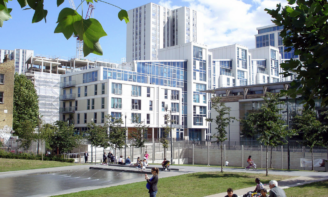
Learning from Europe
by
Over the past several years, the Tower Renewal team at ERA and CUG+R have conducted a series of study tours throughout the European Union, visiting numerous cities and neighbourhoods, and meeting with local experts to learn about best practices in tower refurbishment and neighbourhood revitalization. Many of these findings have been compiled in the report...
Read More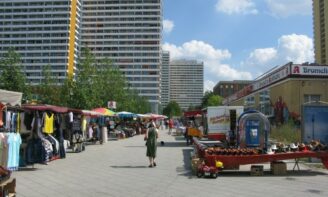
Measure up
by
Edwin Heathcote questions the contemporary trend of ranking cities in a very interesting article on the Financial Times.com Ricky Burdett, who founded the London School of Economics’ Cities Programme, says: “These surveys always come up with a list where no one would want to live. One wants to live in places which are large and...
Read More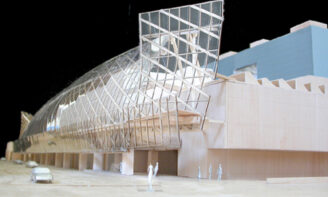
The Suburbs
by
Above: 32 Saintfield Road by Jerome Markson, 1961 In the 1950s and 60s, Toronto’s Bridle Path was not just an enclave of faux-châteaux, but an architectural hotbed for Toronto’s young modernists looking to execute designs for clients with large lots, and large budgets. Greatly varying in materiality and form, these houses convey the experimental spirit...
Read More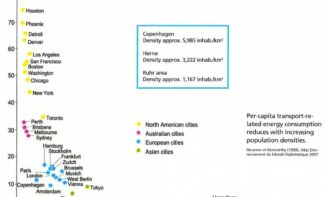
Transport-related energy consumption
by
Edwin found this telling little graph in a supplement to Topos magazine. It clearly illustrates, using a range of international examples, how per-capita transport-related energy consumption reduces with increasing population densities. Interesting with reference to our previous studies on visualizing density, and with the on-going uncertainty surrounding the future of Transit City. The illustration accompanies...
Read More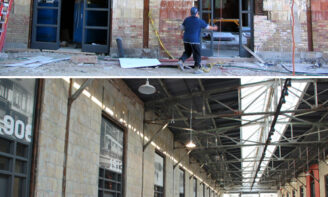
Headspace
by
Michael was recently interviewed for Spacing Magazine, as a part of their Headspace series highlighting “how Toronto can become a more engaged, accessible, sustainable city”. Spacing: Why are heritage buildings important? McClelland: People tend not to have a clear classification of “heritage” but if you consider cities like Montreal and London, they each have a...
Read More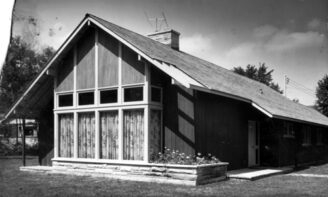
Montreal Trend House to be lost?
by
The fate of Montreal’s Trend House is currently uncertain. A demolition permit has been issued, but support for preservation is growing rapidly. Dave Leblanc has a very interesting article in the Globe and Mail concerning the on-going local debate, and the ramifications for our larger shared built culture. To quote: I’ve said it time and...
Read More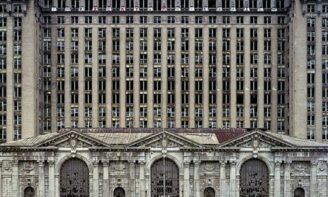
“The expression of the mortality of culture is of value to the culture itself.”
by
Responding to the recently published coffee-table book “The Ruins of Detroit“, Norene Malone has a piece in The New Republic discussing The Case Against Economic Disaster Porn. We might debate her conclusions, but it raises some important discussions. It is interesting to imagine how, looking perhaps to the historic writings of Alois Riegl, we might...
Read MoreVertical Poverty
by
The United Way released a report today outlining the current state of apartment – tower living in the GTA. The report’s finding are based on several thousand interviews with tower residents, and contains important recommendations to improve the livability of apartment neighbourhoods. ERA has long been involved with these Tower Neighbourhoods, and has championed the...
Read More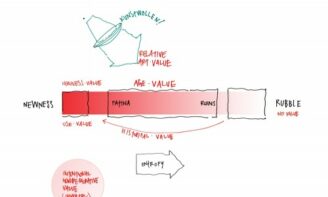
Alois Riegl and the Modern Cult of the Monument
by
Will and Michael teamed up to present a very brief introduction to the writings of Alois Riegl at Friday Social Hour this week. Alois Riegl (1858-1905) was an Austrian art-historian and philosopher. In 1903 he published (in German) a seminal article titled The Modern Cult of the Monument: Its Character and Its Origin, outlining the...
Read More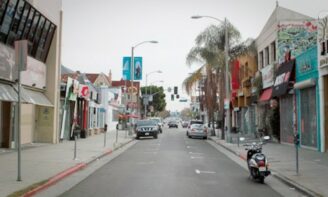
Narrow Streets
by
David Yoon has produced a series of retouched photographs illustrating how streets in LA would look and feel at imaginary, narrower widths. One might also think of them as a very effective demonstration of urban priorities – the built reality of the North American prioritization of the automobile versus human-scale livability. See more at his...
Read More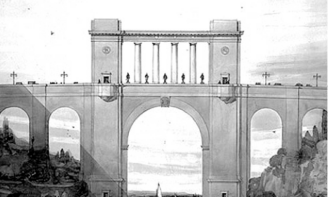
A Grand Entrance
by
John Lyle’s original vision for the north-western entrance to the City of Hamilton. Reminded me of John Lyle’s plan for Federal Avenue in downtown Toronto, linking City Hall to the north to his Union Station to the south. Civic building on a monumental scale – interesting to imagine how it would have changed both the...
Read MoreStill True
by
from the January-February 1936 issue of Canadian Homes and Gardens magazine.
Read More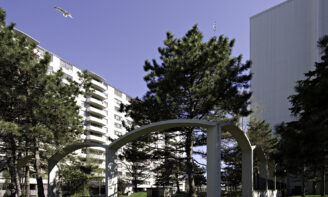
What do architects do?
by
Apartment complexes at 1440-1442 Lawrence Ave. E. in Toronto David Watkin’s book on The Rise of Architectural History has always held for me an almost Darwinian appeal — which I’ve interpreted as a delicious recognition that the cultural value related to architecture has never been static but has had its own evolutionary process. This strikes...
Read More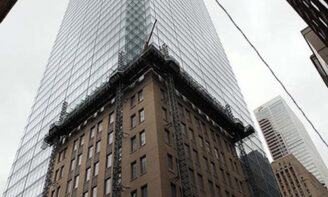
Is a little history worse than none?
by
Photograph taken by René Johnston for the Toronto Star. Article written by Christopher Hume. Please follow the link below to read the full article featured in the Toronto Star. Is a little history worse than none? – thestar.com
Read More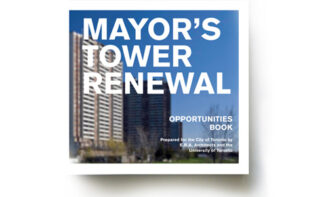
Tower Renewal
by
On September 2nd the Executive Committee at the City of Toronto unanimously passed the Mayor’s Report on Tower Renewal as well as the Opportunities Book, prepared for the City of Toronto by ERA Architects and the City of Toronto. For more information, visit Toronto Tower Renewal
Read More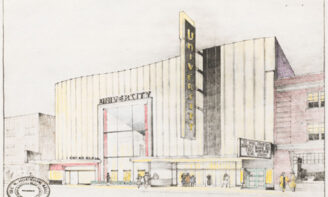
Building Toronto: Archives and Architects Lecture Series
by
February 27, 2008 – Thursday March 6 7pm – 9pm City of Toronto Archives 255 Spadina Road Stephen Otto and Michael McClelland The Importance of Archives Historian Stephen Otto will address the challenges that archives face while trying to stay ahead of the collecting curve with respect to architectural records, and will suggest some strategies...
Read More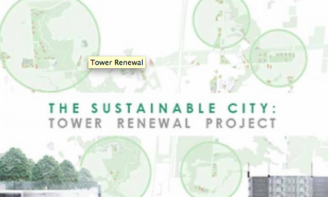
Tower Renewal
by
This past Monday Graeme Stewart and Michael McClelland of ERA presented their ideas for the renewal and environmental upgrade of Toronto’s neglected suburban high-rise neighbourhoods to Toronto’s executive council committee. They demonstrated how re-imagining these buildings, along with the unused open space around them, can considerably improve the social, economic and environmental sustainability of our...
Read More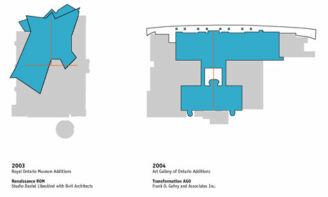
Respectful Rehabilitation
by
This past year ERA Principal Michael McClelland was a guest lecturer at Simon Fraser University. His lectures on Respectful Rehabilitation included “Rehabilitation and New Design – The Royal Ontario Museum and the Art Gallery of Ontario” and “Balancing Heritage Conservation in the Private Sector: A Case Study of the Distillery District in Toronto”. They can...
Read More